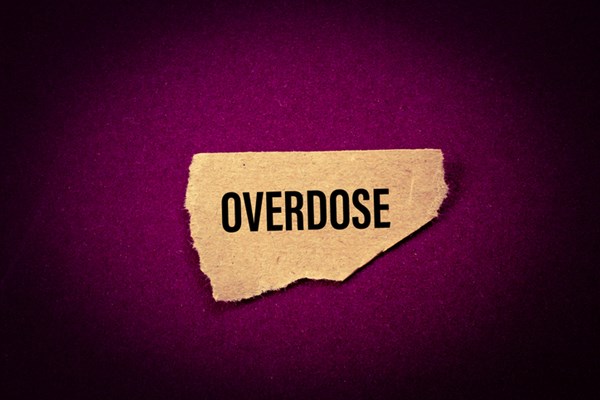Racial Disparities in Who Gets Life-Saving Treatment After an ED Overdose Visit
When a patient survives an opioid overdose and arrives at your emergency department (ED), the next 30 days represent a critical window to save their life. A recent study from Massachusetts showed that more than 5% of all ED patients with nonfatal opioid overdoses died within the next year: 20% died within the first month, and nearly 5% died within 2 days.
Even with decreases overall in overdose-related deaths, racial disparities persist, with Black patients having higher overdose-related deaths than any other racial group. Medications for opioid use disorder (MOUD), like buprenorphine or methadone, are lifesaving. Initiation of buprenorphine is associated with a decrease in subsequent overdose deaths by 62% after a non-fatal overdose.
In an analysis of Medicaid claims between 2016 and 2020, investigators identified ED visits for opioid overdoses and observed whether MOUD was initiated within 30 days. Only 6.4% of ED overdose visits were followed by a claim for MOUD. Rates were significantly lower for Black (4.3%) and Hispanic (4.9%) patients than White patients (7.3%). The authors conclude that broad efforts to promote MOUD have not led to equitable uptake within Medicaid populations, especially among communities of color. There is not only a utilization gap but an equity gap: patients at the highest risk are least likely to receive lifesaving treatment. The policy landscape has shifted since the study period: Congress eliminated the federal DATA "X-waiver" in January 2023, meaning any clinician with a standard DEA registration can prescribe buprenorphine for OUD.
Removing a regulatory barrier does not ensure equitable access, however.
ED-initiated MOUD should be the standard of care after a nonfatal overdose. We should implement order sets for buprenorphine, universally distribute naloxone, schedule close follow-ups, and proactively involve navigator/peer-recovery outreach services. Medicaid and managed care organizations should appropriately reimburse ED-initiated buprenorphine and rapid follow-up, remove prior authorization and step-therapy requirements for MOUD, ensure pharmacies stock MOUD, allow the provision of take-home buprenorphine packs, and link quality incentives to disparity-sensitive metrics. These strategies align funding with the evidence for MOUD.
As with any claims-based study, misclassification is possible, and results might not reflect non-Medicaid populations. Nonetheless, the nationwide scope and consistent direction of effects make the core message clear: post-overdose prescription of MOUD is uncommon, and disparities are increasing. The challenge for clinicians and policymakers is to convert a legal ability to prescribe buprenorphine into equitable, dependable access, starting in the ED, where opportunity and risk converge.
Abstract
Nguyen T, Jiao Y, Lee SS, et al. Medicaid patients with ED visits for overdose: Disparities in initiation of medications for opioid use disorder. Health Aff (Millwood). 2025;44(5):622-630.
Summary
Medications for opioid use disorder (MOUD) after emergency department (ED) visits for overdose can reduce subsequent overdose deaths, but disparities in receiving MOUD persist in the U.S. Using national Medicaid claims data from the period 2016-2020, we examined racial and ethnic disparities in MOUD initiation after ED visits for opioid overdose. Overall, 6.4% of Medicaid ED visits were associated with a claim for MOUD within 30 days. This rate was highest among non-Hispanic White (7.3%) patients and lowest among non-Hispanic Black (4.3%) and Hispanic (4.9%) patients. The adjusted rate of MOUD initiation was 2.5 percentage points lower among Black patients compared with White patients, and this disparity increased nearly twofold between 2016 and 2020. Although policy and clinical efforts to increase MOUD use in the Medicaid population are important, findings suggest that efforts targeting patients from racial and ethnic minority groups may be warranted.
EMRA + PolicyRx Health Policy Journal Club: A collaboration between Policy Prescriptions and EMRA
 As emergency physicians, we care for all members of society, and as such have a unique vantage point on the state of health care. What we find frustrating in our EDs - such as inadequate social services, the dearth of primary care physicians, and the lack of mental health services - are universal problems. As EM residents and fellows, we learn the management of myocardial infarctions and traumas, and how to intubate, but we are not taught how health policy affects all aspects of our experience in the ED. Furthermore, given our unique position in the health care system, we have an incredible opportunity to advocate for our patients, for society, and for physicians. Yet, with so many competing interests vying for our conference education time, advocacy is often not included in the curricula. This is the gap this initiative aims to fill. Each month, you will see a review of a new health policy article and how it is applicable to emergency physicians.
As emergency physicians, we care for all members of society, and as such have a unique vantage point on the state of health care. What we find frustrating in our EDs - such as inadequate social services, the dearth of primary care physicians, and the lack of mental health services - are universal problems. As EM residents and fellows, we learn the management of myocardial infarctions and traumas, and how to intubate, but we are not taught how health policy affects all aspects of our experience in the ED. Furthermore, given our unique position in the health care system, we have an incredible opportunity to advocate for our patients, for society, and for physicians. Yet, with so many competing interests vying for our conference education time, advocacy is often not included in the curricula. This is the gap this initiative aims to fill. Each month, you will see a review of a new health policy article and how it is applicable to emergency physicians.



